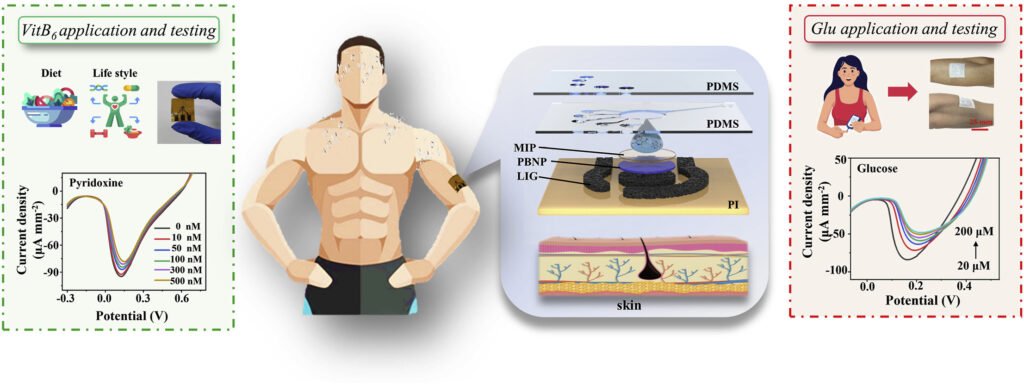A team at Penn State has developed a skin-mounted sensor that can detect vitamin B6 and glucose in sweat, offering a non-invasive way to monitor key health markers. This technology could be especially useful for people with chronic conditions like diabetes, who often experience low vitamin B6 levels and need regular glucose monitoring.
Vitamin B6 plays a vital role in immune function and brain health, but current methods for measuring it require expensive and invasive blood tests. The new sensor uses laser-induced graphene nanocomposites combined with molecularly imprinted polymers (MIPs) to selectively bind and detect vitamin B6 molecules. These MIPs act like artificial enzymes, mimicking biological receptors to identify trace amounts of the vitamin in sweat.
To enhance sensitivity, the researchers added Prussian blue redox probes, which produce an electrical signal when they interact with target molecules. The sensor can detect vitamin B6 at concentrations as low as 0.93 nanomolar, well below typical sweat levels of around 100 nanomolar. It also detects glucose with a limit of 93 nanomolar, making it highly sensitive compared to existing sweat-based monitors.
The platform is adaptable and could be modified to detect other biomarkers, such as reproductive hormones or proteins linked to infectious diseases. By enabling continuous, at-home monitoring, the sensor could help patients and healthcare providers track changes in immune health and intervene before symptoms worsen.
Article from Penn State: Highly sensitive monitor can detect vitamin B6, glucose in sweat
Abstract in Composites Part B: Engineering: Laser-induced graphene nanocomposites with molecularly imprinted polymers and Prussian blue for electrochemical sensing of vitamin B6 and glucose

